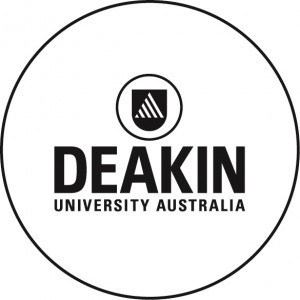The Bachelor of Urban and Environmental Planning at Griffith University offers students a comprehensive understanding of the principles and practices involved in shaping sustainable urban environments. This program prepares graduates to address the complex challenges of urban growth, environmental management, and sustainable development through a multidisciplinary approach. Students will develop skills in land use planning, environmental impact assessment, community consultation, policy analysis, and sustainable design. The curriculum combines theoretical knowledge with practical experience, enabling students to engage with real-world planning projects and frameworks. Throughout their studies, students will explore topics such as urban design, transportation planning, natural resource management, and climate resilience. Griffith University's emphasis on experiential learning is reflected in opportunities for internships, industry placements, and collaborative projects with local councils and planning agencies. Graduates of this program are equipped to work in diverse roles within government departments, consultancy firms, community organizations, and environmental agencies. They will be capable of contributing to the development of livable, equitable, and environmentally responsible communities. The program also encourages critical thinking and ethical decision-making, essential qualities for planning professionals committed to sustainable development. With dedicated support from experienced faculty and access to state-of-the-art facilities, students will gain both the theoretical foundation and practical competencies needed for a successful career in urban and environmental planning. The Bachelor of Urban and Environmental Planning at Griffith University is designed to provide a pathway to professional accreditation and to meet the requirements of planning registration bodies in Australia, ensuring graduates are well-prepared to contribute effectively to the planning sector nationwide.
Griffith University grants credit and recognition of prior learning which may relate to prior formal learning or earlier casual and non-formal learning. To find out more, please see the following website:https://www.griffith.edu.au/apply/credit-transfer Credit transferGriffith's innovative Credit Precedent Database allows you to find out what credit conclusions have been made in the past. These precedents will provide you with an idea of what you can expect.https://app.griffith.edu.au/credit-precedent/credit_result.php? Ngpc=5576&-SortField=Connected%20Institutionpercent 20Name&-noresultserror=error.html&-search View charge precedents for this particular program
Any Bachelor's degree or higher Griffith Graduate Certificate in Urban and Environmental Planning (4.5 GPA)
Funding options for the Urban and Environmental Planning program at Griffith University include a variety of financial assistance opportunities for domestic and international students. Domestic students may access government-funded schemes such as scholarships, bursaries, and student loans provided through the Australian government, which help reduce the financial burden of higher education. Griffith University offers several scholarships based on academic merit, need, or extracurricular achievements; applicants should check specific eligibility criteria and application deadlines. International students can also apply for scholarships offered by the university, some of which are specifically designated for planning or environmental disciplines, as well as for students from certain regions or backgrounds. Additionally, students can explore study grants, financial aid packages, and external scholarships from organizations and institutions related to urban planning and environmental sustainability. For students seeking external funding, there are options such as government-sponsored international student loans and sponsorships from private companies or non-governmental organizations aligned with environmental and urban development initiatives. The university also provides detailed advice on payment plans, installment options, and part-time work opportunities to help students manage their finances effectively during their studies. Furthermore, international students should consider currency exchange rates, visa requirements related to financial capacity, and potential eligibility for Australian government assistance programs. The program’s cost structure includes tuition fees, which vary depending on the student’s residency status and enrolment type, and additional expenses such as textbooks, course materials, and living costs. Students are encouraged to consult the Griffith University website and financial aid office for the latest information on funding options, application procedures, and deadlines to maximize their financial planning for studying Urban and Environmental Planning.
Griffith University's Urban and Environmental Planning program offers a comprehensive education designed to prepare students for careers addressing the complex challenges of urban development and environmental sustainability. The program emphasizes an interdisciplinary approach, integrating principles from geography, architecture, environmental science, and social sciences to develop innovative solutions for sustainable city planning and resource management. Students are introduced to key concepts such as land use planning, urban design, environmental impact assessment, and policy development. The curriculum includes both theoretical coursework and practical experiences, such as community engagement projects, internships, and fieldwork, providing students with real-world skills and professional connections. The program aims to equip graduates with the ability to analyze urban issues critically, formulate strategic plans, and implement environmentally responsible urban development strategies. It also emphasizes the importance of inclusive planning that considers social equity and community needs. Students can choose from various specializations or electives that align with their career goals, including regional planning, environmental law, or transportation planning. Griffith University also fosters research and innovation in urban and environmental planning through collaborations with government agencies, industry partners, and research institutes. Graduates of this program are prepared for employment in government departments, consultancy firms, non-governmental organizations, and community groups involved in urban development, environmental management, and sustainability initiatives. The Bachelor of Urban and Environmental Planning program is accredited by relevant professional bodies, ensuring that graduates meet the standards required for professional practice in Australia and internationally. With a focus on sustainable development, social justice, and environmental resilience, the program emphasizes preparing students to become responsible planners capable of making a positive impact on communities and the environment.










